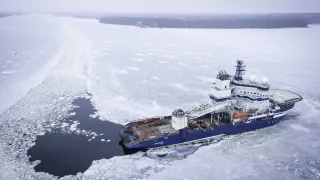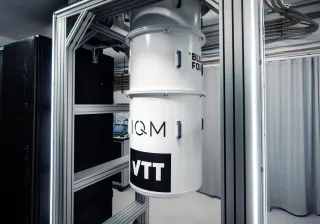Material overboard! Logbook entry on 2 February 2018 at 07.50 hours at 61°18′50″N 023°45′10″E: non-environmental object overboard. Two boys are walking to school, one of whom is eating from a jar of baby food. Out of the corner of my eye, I notice the jar flying through the air into a bank of snow. I turn around and say, “Are you serious? Did you really just throw that jar away? Come and pick it up.” The boy obediently returns. “It’s not nice to have trash thrown into our yard. Secondly, a jar does not decompose in the natural environment. Take it to that recycling bin,” I say, returning the jar to the boy’s hand.
Clearly, if perfectly usable material ends up somewhere other than recycling, there has still been too little discussion of the circular economy. Plastic is a material that could be used even more widely than glass.
Good or bad guy?
People have a range of opinions on plastic, and the headlines handle the issue from a number of perspectives: “The age of plastic is coming to an end”, “Plastic from sugar”, “Beaches are choking on plastic,” “The future of plastic begins at the designer’s desk,” “Plastic recycling is a lovely, but not yet viable, idea”, “Millions of plastic beads are entering the world’s oceans”, “New (plastic) material draws energy from light”, “Avoid plastic”.
These concepts can easily be mixed up and perspective lost when trying to create click-bait. For example, in such cases it might be forgotten that plastic can be found in places other than disposable products or plastic bags. A plastic bag purchased in Finland does not have to end up in the Baltic, but the consumer can decide whether to recycle it as a material or use it to generate energy.
Global production of plastic has risen each year and its use is increasing as national economies develop. However, recycling and reuse have not kept pace with this process. New innovations and measures are needed to balance the situation. In plastic, a material scientist sees a material, the status of which (whether good or bad) depends on its overall life cycle.
Responsible use of plastic
To speed up the circular economy, the EU Commission published its strategy on plastics on 16 January 2018. The contents of the strategy can be summarised by saying that, from now on, the entire lifecycle of plastic materials will be taken into account from design, production and use all the way through to recycling. In addition, by 2030 all packaging must be recyclable.
In some respects, industry is already sailing ahead of the strategy in terms of its goals: for example, a large industrial flagship, Unilever, is committed to making its packaging recyclable by 2025.
The plastic strategy also takes account of microplastics, whose intentional use is restricted in products. The washing of synthetic textile fibres and the reduction of micro-plastic emissions from traffic is the subject of a further investigation by the European Commission. A macro-plastic product that enters a body of water after being worn down into microplastics represents a wasted opportunity, i.e. an obstacle to the potential recycling of the product’s material.
Plastic is a useful material when used responsibly. Responsibility is based on products at the end of their lifecycle being returned for recycling. Many dangerous waters must be avoided when recycling materials, but there are also several routes to successful recycling.
A full cargo of options
A range of possibilities is available when designing and implementing recycling. The following alternatives must be weighed up for both concentrated regional recycling systems, and wider national alternatives:
- Mechanical recycling/chemical recycling
- Adding value to recycled fractions/use of recycled fibre as is
- Sorting at the location where the waste is created/reception of mixed plastic fractions
- Compacted multiple-sorting methods/sorting methods based on a single technology
Key factors include the types of material streams and their availability, as well as the homogeneity of fractions. Functional and efficient logistics complement the recycling value chain.
Big flagships
Companies – both large and small – and cities investing heavily in the circular economy are flagships showing the way in the recycling and re-use of plastic.
In November 2017, VTT and Nokia began a concept development project, resulting in a model of a plastic recycling plant for the ECO3 area. ECO3 is a bio and circular economy business district located in Kolmenkulma in Nokia. Mixed raw material streams, whose value has been raised by new types of refining, provide a channel for the wider application of plastics recycling for the project and in general.
The EU’s strategy highlights public actors, who are encouraged to favour recyclability and recycled plastics in their procurement activities. This is a major opportunity for many companies both within and outside the ECO3 area. At VTT, we know how to help businesses take advantage of this opportunity.
What about the two youngsters who ran into our materials researcher early one morning? What happened to the baby food jar that was picked out of the snowdrift? It wound up in a glass recycling bin, where it belonged. The course was corrected with a tiny adjustment. The circular economy represents an opportunity for us all: Welcome aboard!



